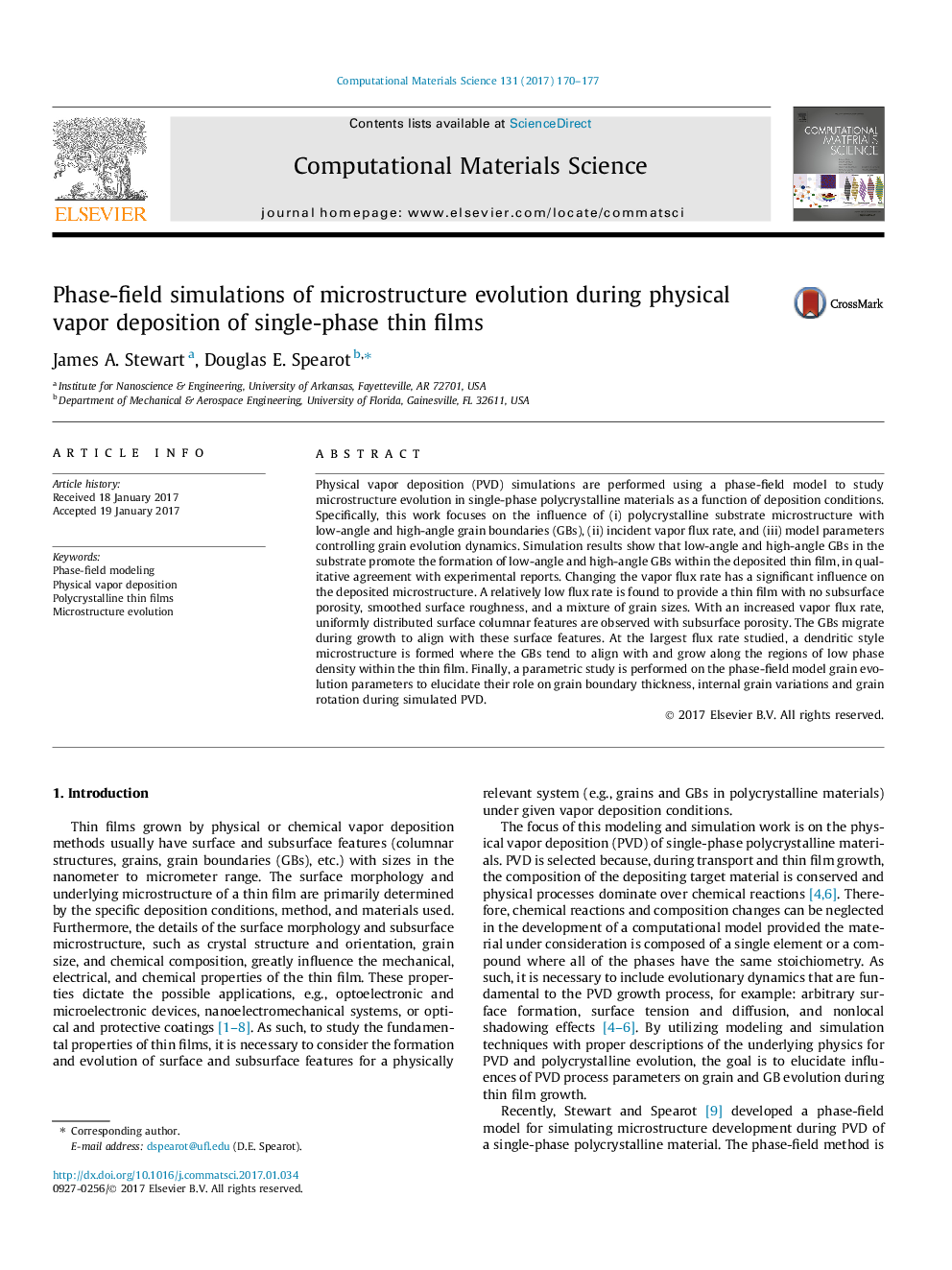| Article ID | Journal | Published Year | Pages | File Type |
|---|---|---|---|---|
| 5453232 | Computational Materials Science | 2017 | 8 Pages |
Abstract
Physical vapor deposition (PVD) simulations are performed using a phase-field model to study microstructure evolution in single-phase polycrystalline materials as a function of deposition conditions. Specifically, this work focuses on the influence of (i) polycrystalline substrate microstructure with low-angle and high-angle grain boundaries (GBs), (ii) incident vapor flux rate, and (iii) model parameters controlling grain evolution dynamics. Simulation results show that low-angle and high-angle GBs in the substrate promote the formation of low-angle and high-angle GBs within the deposited thin film, in qualitative agreement with experimental reports. Changing the vapor flux rate has a significant influence on the deposited microstructure. A relatively low flux rate is found to provide a thin film with no subsurface porosity, smoothed surface roughness, and a mixture of grain sizes. With an increased vapor flux rate, uniformly distributed surface columnar features are observed with subsurface porosity. The GBs migrate during growth to align with these surface features. At the largest flux rate studied, a dendritic style microstructure is formed where the GBs tend to align with and grow along the regions of low phase density within the thin film. Finally, a parametric study is performed on the phase-field model grain evolution parameters to elucidate their role on grain boundary thickness, internal grain variations and grain rotation during simulated PVD.
Keywords
Related Topics
Physical Sciences and Engineering
Engineering
Computational Mechanics
Authors
James A. Stewart, Douglas E. Spearot,
